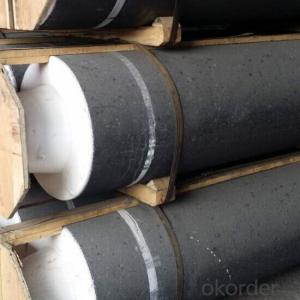Graphite electrodes are the unsung heroes of many industrial processes. They’re the workhorses, the backbone, the silent partners that keep the wheels of industry turning. But who really knows about these graphite wonders? Not many, I’d wager. So, let’s dive into the world of graphite electrodes and uncover their hidden talents and contributions to the industrial stage.
First off, what are graphite electrodes? They’re made from graphite, a form of carbon that’s known for its high resistance to heat and electrical conductivity. These properties make graphite electrodes perfect for a variety of applications, from electric arc furnaces to ladle furnaces, and even in aluminum and steel production. They’re the go-to choice for melting and refining metals, thanks to their durability and ability to withstand extreme temperatures.
But it’s not just their heat resistance and conductivity that make graphite electrodes special. They’re also incredibly versatile. They can be shaped and sized to fit the needs of different processes, making them a customizable solution for various industries. Whether you need a small electrode for a specific task or a large one for a more substantial operation, graphite electrodes have got you covered.
Now, let’s talk about the production process. Making graphite electrodes is no small feat. It’s a meticulous process that requires precision and expertise. The raw materials, petroleum coke and needle coke, are carefully selected and blended. Then, they’re baked at high temperatures to create a dense, strong structure. The resulting product is a graphite electrode that’s ready to take on the challenges of the industrial world.
But the journey doesn’t end there. Once the graphite electrodes are produced, they’re put through a series of tests to ensure their quality and performance. They’re checked for density, strength, and electrical conductivity. Only the best make the cut and are sent out to serve in various industries.
One of the most significant advantages of graphite electrodes is their environmental friendliness. They produce fewer emissions than other methods of metal production, making them a more sustainable choice for the future. As the world moves towards greener technologies, graphite electrodes are poised to play a crucial role in this transition.
In the world of electric arc furnaces, graphite electrodes are the stars of the show. They generate the electric arcs that heat the furnace and melt the metal. Without them, the process would be much less efficient and more time-consuming. They’re the driving force behind the production of steel and other metals, and their importance cannot be overstated.
Another area where graphite electrodes shine is in the production of aluminum. They’re used in the electrolytic process to extract aluminum from its ore. Their ability to conduct electricity and withstand high temperatures makes them indispensable in this process.
But it’s not just about their functionality. There’s also an emotional aspect to graphite electrodes. They’re the unsung heroes of the industrial world, working tirelessly behind the scenes to make our lives better. They’re the silent force that shapes the world around us, and yet, they often go unnoticed and unappreciated.
So, the next time you see a piece of steel or aluminum, take a moment to appreciate the graphite electrodes that made it possible. They may not be the most glamorous part of the process, but they’re the backbone of the industry, and their contributions are immeasurable.
In conclusion, graphite electrodes are a vital component in the industrial processes that shape our world. They’re the unsung heroes that power our factories and forge our metals. Their versatility, durability, and environmental friendliness make them an essential part of the future of industry. So, let’s give a round of applause for the graphite electrodes, the silent partners that keep the wheels of industry turning.

